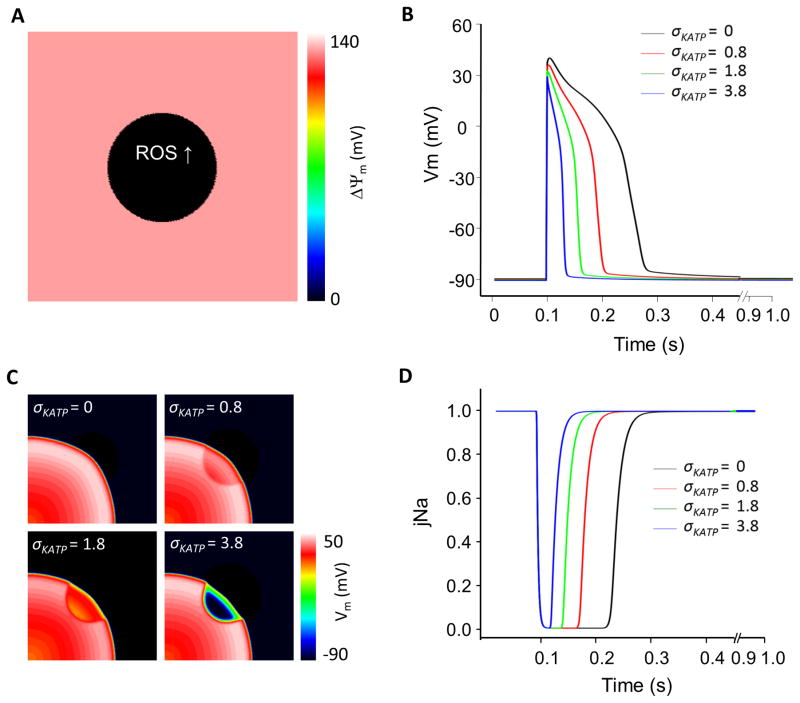Figure 1.
Impact of ROS-induced regional mitochondrial depolarization on metabolic sink formation and electrical wave propagation in a 2D tissue model. (A) Regional ΔΨm depolarization in the central region occurs spontaneously when fractional ROS generation by the electron transport chain is increased (ROS shunt increased from the nominal level of 2% to 14% in the central zone); (B) Effects of changing KATP channel density (0, 0.8, 1.8 and 3.8/μm2) throughout the model on the AP at the center of the metabolic sink (action potentials outside of the sink were not affected); (C) Propagation of the electrical wave through the metabolic sink at 90ms after the S1 stimulus (1Hz stimulus applied at lower left corner); and (D) sodium channel availability (jNa; inactivation gate parameter) with different KATP channel densities. 2D tissue model size: 5x5cm2, 63,000 nodes; Sink zone radius, r=1cm; Tissue conductivity: 0.1S/m. ECME-RIRR model parameters were otherwise identical to those in ref.17.

